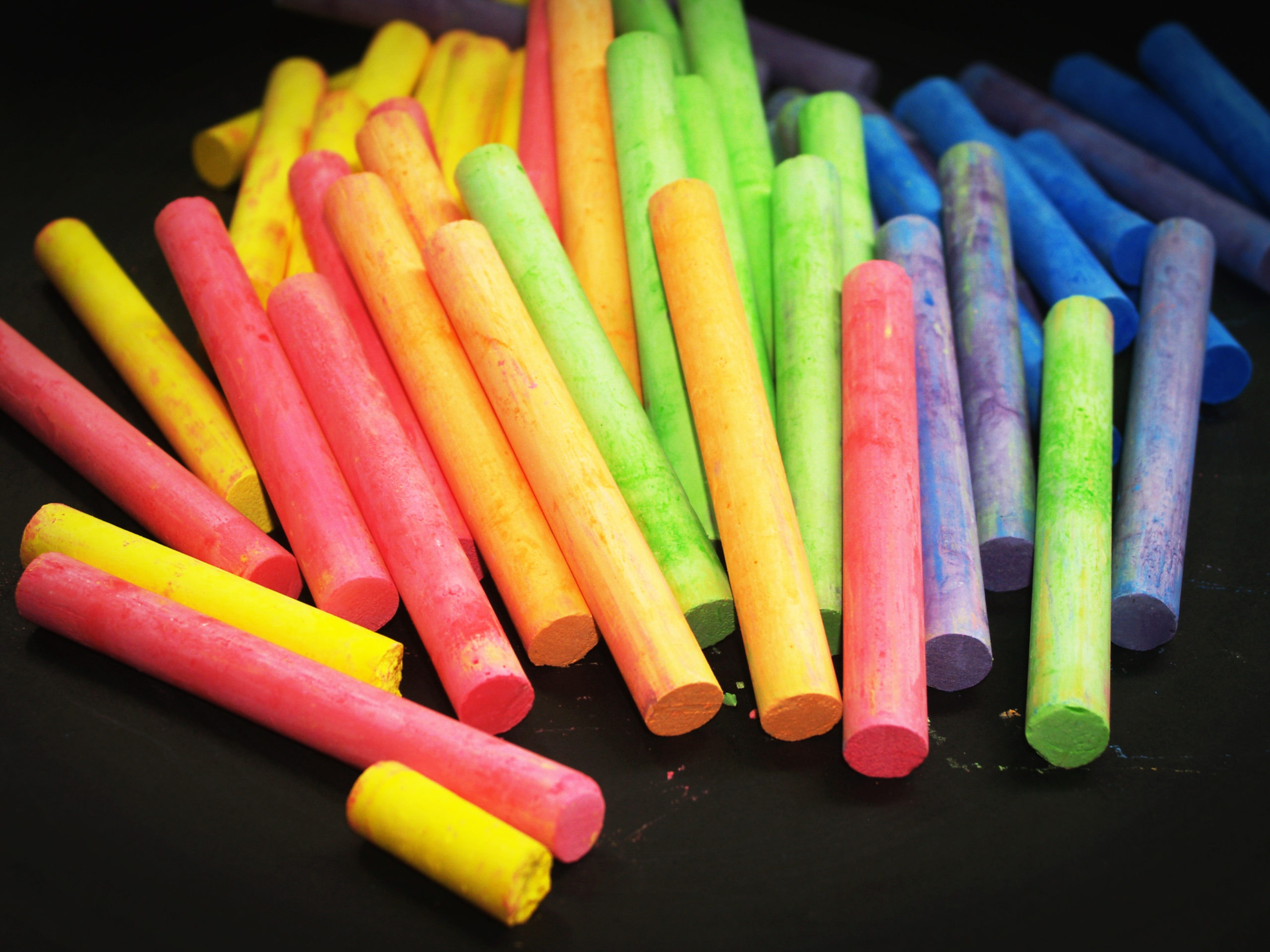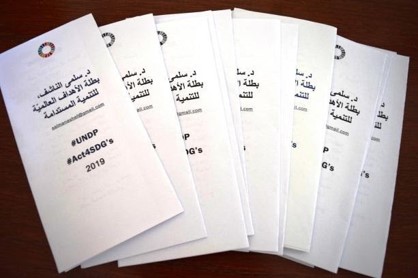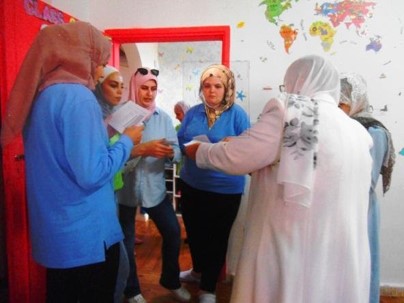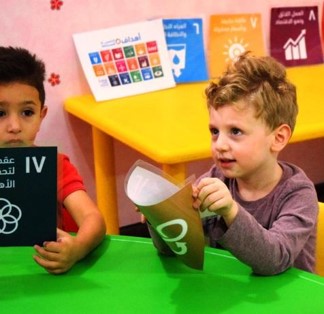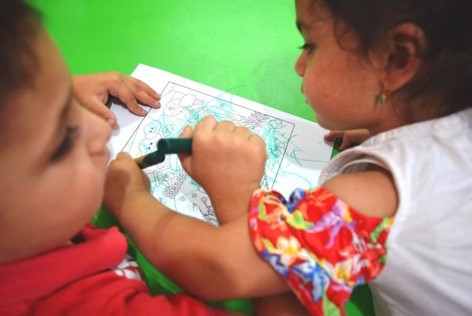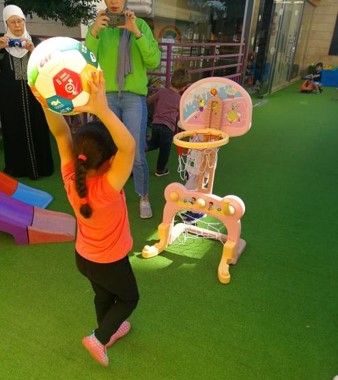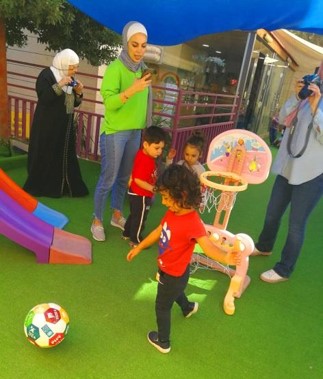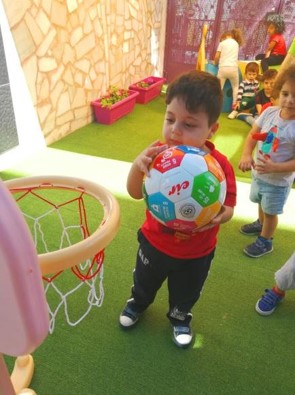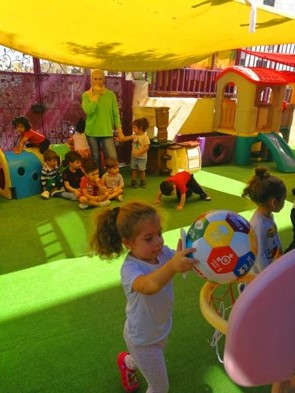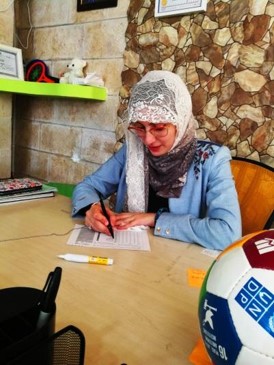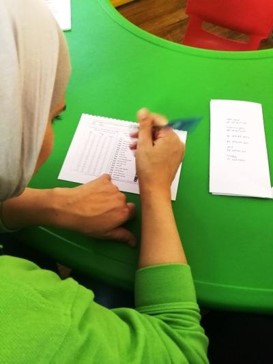By Dr. Salma Nashef
Even though I am retired, I love to learn, and was very interested to try MOOCs. In April 2018, I came across the online course Transforming Development: The Science and Practice of Resilience Thinking, created by the SDG Academy and the Stockholm Resilience Centre, and I found that it affected my way of thinking. I took four more SDG Academy courses, and today consider myself a very proud SDG Academy alum!
After taking the courses, I was inspired to start several projects to share what I had learned, such as making a Facebook group to support the elderly, creating a YouTube channel to share experiences in my life, presenting a paper on sustainable development at the 2017 EduTech Middle East Conference in Dubai, and constructing an online school with courses on education and the SDGs in English and Arabic. But one of my favorite projects is my attempt to spread the idea of the SDGs in a very simple way to nursery school children and their teachers in Amman, Jordan.
The idea of this project emerged from my dismay at the absence of cooperation between individuals and decision makers. I was in a panic. I needed to do something about the SDGs but I couldn’t do it by myself. Then an idea came to my mind: I have a friend who owns a nursery school. Why not contact her for help?
I contacted the head of the nursery and trained a teacher to give the lesson on the SDGs.
My main objectives were:
- To acquaint the children with the shapes and colors of the SDGs, to be familiar with them and to make it easier for them in their future learning,
- To give the teachers an idea about the 17 SDGs and how to implement them in their daily lives.
It was very difficult to deal with children ages 3 and 4 who can’t be kept in the class for more than 10 minutes, as well as with teachers who don’t know anything about the SDGs. It took me time to prepare for this activity through messages, WhatsApp, phone calls, and training.
On the day of the workshop, the teacher, with the help of others, introduced me to the children, who were divided into groups of 2 to 5 and waiting eagerly with their bright eyes to see what would happen.
The teacher started by distributing the 17 colored posters of the Goals, saying that “every child will grow to become a remarkable person in society and can change it to become better.” She then asked them, “What profession do you wish to have in the future?” Most of them raised their hands and she chose several answers and commented on them.
We had brought booklets created by UNDP, and the teacher told them to color them in. To each group, she distributed one page containing a story about one of the SDGs and, with the help of the other teachers, explained the idea behind each story as the children colored in the page.
The children were very happy and interested. Even when coloring time was over, some of them didn’t want to give up the pages! But the teacher kindly pulled them away and told the children it was time to go out to play with the SDG football, where the children learned that playing is very good for them to grow and become stronger.
Overall, the session took about half an hour, which was too much for the children, and also difficult for the teachers to keep them quiet and interested. Everything went excellently, but the teachers were exhausted! The teachers told me that they were proud to have such a pioneering activity in the nursery.
After the activities, I asked the teachers to fill out UNDP’s “My World 2030” survey to understand their learning about the SDGs:
- 33% knew about the SDGs,
- SDG 1 (No Poverty), SDG 4 (Quality Education), and SDG 6 (Clean Water & Sanitation) had the highest percentage (83%) among the teachers’ concerns,
- SDG 11 (Sustainable Cities & Communities), SDG 12 (Responsible Consumption & Production), and SDG 15 (Life On Land) had the least concern percentage, 0%.
Finally, I submitted a certificate of thanks to the headmaster for her great cooperation at the time when I was missing it from all else.
A quick evaluation of the workshop: I found that it needs much more time in the form of a series of continuing activities and workshops of stories, games, discussion, and more which are suitable for the children. In spite of this, it was useful for the children to be familiar with the colors and shapes of the 17 SDGs, as I mentioned in the first objective.
With regard to the teachers, the same is true. They need to have successive training and lectures to grasp the idea very well and thus transmit it clearly to their children. But it was very good to take the first step with them.
For me, I was happy and interested to share the SDGs with lovely, clever, and motivated children in a cooperative and healthy environment, in spite of the fact that it took me one week to prepare for this half-hour activity. I’m ready to repeat it again at any level, if I have the chance to do so or if it is requested.
I recommend giving this activity or any SDG-focused activities to any level of student and to continue the program for one semester, one year, or more, to ensure students understand the idea clearly and how to apply it in their daily lives.
Last, but not least, I can say that through the commitment of all, we can create a better future for the coming generation.
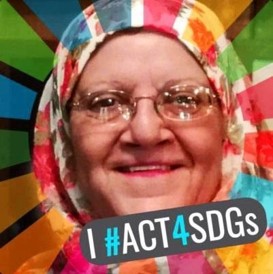
Salma Nashef received her Doctor of Philosophy in Educational Sciences from the Graduate School of Social Sciences, Middle East Technical University, Ankara, Turkey. She is an MBRU Community Immunity Ambassador Member and a UNDP SDG Champion, an honor given by UNDP to local champions of the SDGs around the world. She was also named an Ellevate Featured International Storyteller and featured on the Conversations With Women Changing the Face of Business podcast.
